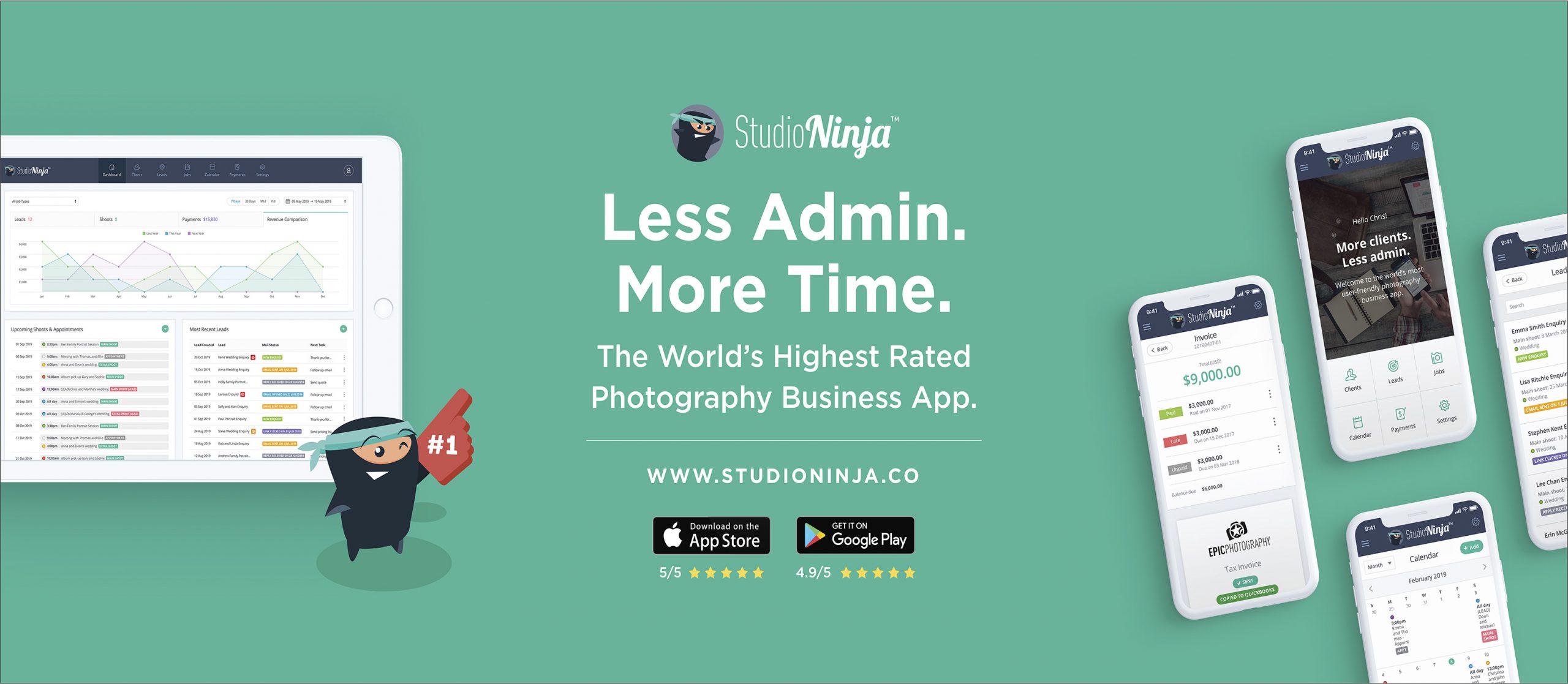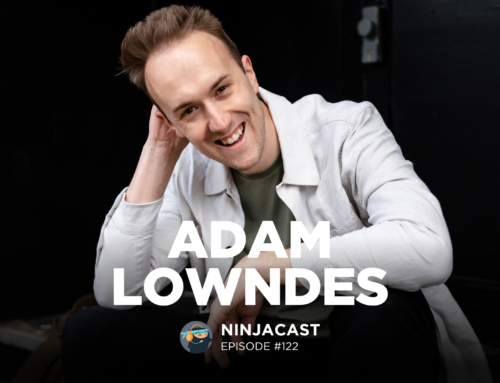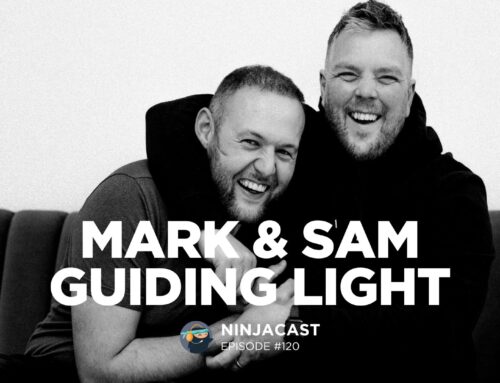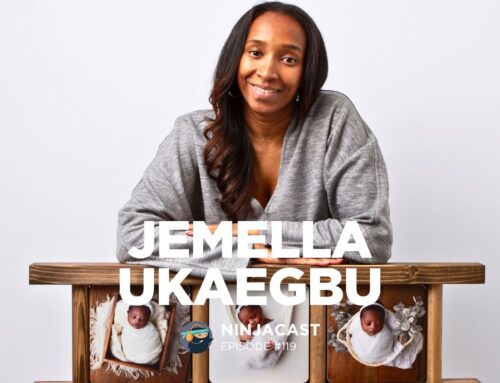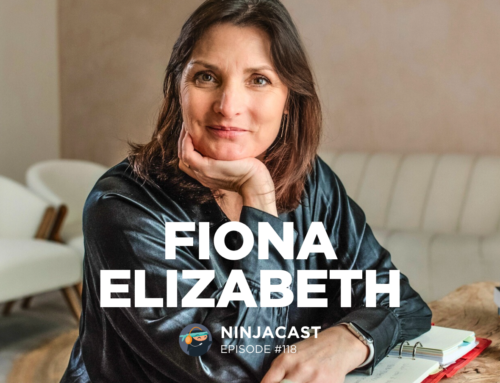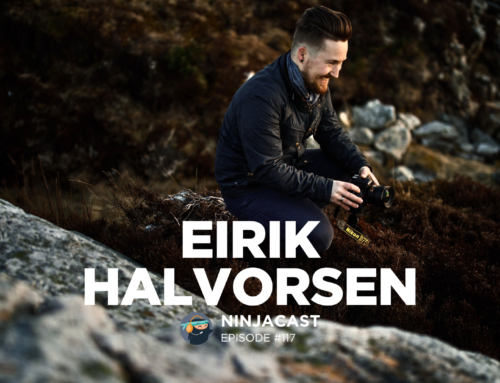014: Anna Hardy – How Your Branding Represents You & Making The Transition from Weddings to Family Photography
October 31, 2020
“Leap and the net will appear”
ANNA HARDY
Hey everyone! It’s Sally here, from Studio Ninja. Today’s episode is all about Anna Hardy – we are really excited to have her on the show.
Anna is a family photographer and mentor living in sunny Manchester, mum to 15 year old Joe and 6 year old Huey. She specialises in fearless photography for big-hearted families, finding and celebrating their own unique stories of magic and adventure. With 13 happy years in the photography industry, Anna spent over a decade shooting weddings, before successfully transitioning from wedding to purely family photography, and is now one of the country’s leading family photographers.
As a past secondary school teacher, she’s hugely passionate about education and supporting others to realise their own unique strength and worth and has helped hundreds of photographers develop and grow their own family and wedding photography businesses. She runs The Shutterhood, a membership community that gives photographers who are just starting out the essential tools and foundations to launch and grow their own photography business. She also has a course, The Roost, which shows photographers how to tailor and adapt their business for family photography so that they can successfully transition or add it as an additional ‘arm’ to their photography business.
Check out some of the biggest points from Anna’s interview below:
What would you say are the key elements to having them growing their successful family photography business?
Okay, well, I would say, number one, it sounds a bit obvious, but just like being a nice person, you’re kind of dealing with people in their homes. And I mean, I think to be any kind of photographer should be a nice person. But if you’re at a big event, where you can kind of blend into the backgrounds, and you’re not, you may be doing a more sort of fly on the wall kind of approach and everyone’s distracted by the event that’s going on without you. But with family photography, there’s no kind of hiding, and you’ve got to show up there and make them feel good and make them feel happy and comfortable, and you’re in their home, it’s that private space or even if you’re out and about you with their children, the most precious things to them, you’ve got to be really respectful and nice.
So I think, number one, actually just being a nice friendly person is actually the biggest thing, but I think from a business point of view, definitely branding and understanding your ideal client. There’s not a one size fits all approach to family photography, there’s so many different ways you can do it. You see fine art family photographers, studio family photographers, and outdoor and I mean, there’s every kind of approach, there is no right or wrong. And I think that’s the thing, it’s a bit like, you can sort of find yourself sort of having like shiny object syndrome, if you look at too many other photographers, it’s like, “Well, they’re doing it like that, I know that she’s doing it like that, and he’s doing it like that.”
There just isn’t a right or wrong way to do it. You’ve got to build it from what feels right to you, in your own brand in your own values and ethos and approach and sort of keep it really niched down on that. Because you kind of in trying to appeal to everyone, you’re going to appeal to no one, you’re not going to excite anyone. And so I think really understanding your ideal client, and building your brand in your niche around what feels right for you and them is key. And also I would say for family photography, you just got to get your head around marketing. I mean, I’d say that is true for any photographer. But I think certainly I found it was less urgently needed with weddings, possibly because you kind of get booked fine and once you have that safety net of knowing what your income is going to be quite far in advance. And because they’re kind of large ticket items, you can get one booking and that sorts you out for the month.
Whereas with family photography, it’s not the same. It’s much more kind of hand to mouth. People will book you when they want the shoots, you’re unlikely to get your diary kind of booked out ages in advance. You might sometimes but I’ll have some booked in but you need to have this consistent kind of lead generation. Otherwise you’re going to spend every month going, “How am I going to pay the bills this month? How am I going to pay the bills this month?” That is stressful. So you’ve just kind of got a… I know we all don’t like marketing but it’s kind of you’ve got to just get your head around it and actually realize that it’s not that scary and it’s not that awful and it’s literally just telling people what you do.

What marketing techniques do you find the most useful?
Okay, well, top tip number one is that you do not need to do every kind of marketing. There are so many different kinds of marketing out there. And you can feel like you need to be doing all of them like well I need to be on Instagram or I need to be on Facebook, I need to be doing SEO I need to be doing Facebook ads and doing in person events, There’s like, dozens of different marketing techniques that you can do. If you try and do all of them… some companies have, well, most companies will have a marketing team, not just one person dedicated but often a team, those are the companies that can do every kind of marketing, they’ve got someone doing each thing, as a one person or two person business, while you’ve got to do all the other stuff that we do as well, you’re just not going to be able to do all of them really well. And so even if you want it to all right, you’re not going to be able to anyway.
But also, if you try and do them all, you’re going to feel overwhelmed. And you’ll also do them badly, you’ll just sort of half assed them all the time. And that can be worse than doing nothing, because if you’ve got a flimsy presence somewhere, it’s just going to, that just isn’t going to reflect well on you. What all successful businesses have in common is that they’ve done at least one thing really well. And that’s going to be different for different businesses, like some photographers will say, “I literally get like 90% of my bookings from Instagram,” in which case, that’s great, they’ve gone all in on Instagram, focus on that, and that’s great. Others will say “No, it’s my mailing list.” Others it will be like a Facebook group, others it might be in person events, or others it might be they’ve got a really good reputation, not reputation and relationship with a wedding venue that just farms clients out there. It might be that they have a really solid referral group with other photographers and they all pass referrals to each other.
There just isn’t a right or wrong, but you need to find one thing and it’s got to sit right with you personally and feel something that you actually could… you might not enjoy it, but you at least don’t hate it and it fits, sits right with how you like to do things and also that your ideal client also enjoys or interacts with. So for example, for me, I just don’t like Instagram, I just don’t enjoy it, I don’t enjoy being on it, whether it’s for work or for pleasure, it’s not a space that I like. So I don’t really focus on that. I have an Instagram profile, but I’m not kind of it takes over and does very little else. But that’s fine, because what works for me, I find focusing on my mailing list really works and collaborations with other brands really works. So other brands who serve my ideal client. So for me, I just put, it’s the 80/20 rule, isn’t it like you put 80%, 20% of the things will yield 80% of the results, but 80% of your energy, so I put the vast majority of my energy into my mailing list and collaborations because those are things that I’ve done in the past. I enjoy them, they feel right to me, they feel comfortable to me. And they’ve yielded results.
So you just rinse and repeat. It’s worked before so actually, yeah, I could, sometimes you think I hear people say “Oh, but I’ve got all these kinds of Instagram.” And I also know that a lot of my ideal clients love Instagram, loads of mums on Instagram, and dads but I just don’t like being on it. So I could go, but I’m missing a check, I could be yes, I could be marketing there. But actually, it works for me to just stick with what works and what I know.

Can you perhaps give our listeners some top tips on building a strong brand and where that process came from for you?
Sure, thanks very much. I really appreciate that. I have to actually as well give a massive high five or thumbs up to Melissa Love who did do my website and she’s responsible for the visual side of it and setting that all up so I can [crosstalk 00:29:50] find space. She’s lovely. And she did such an amazing job with that. So I can’t take all the credit on the website. But in terms of branding, I would say the main few tips is you’ve got to understand the difference between visual branding and conceptual branding. And lots of people just think of the visual side, like, I need to pick a logo, I need to pick some patterns and fonts and colors. And that should be like the last thing that you do, because it’s like the clothing.
If your brand’s like a person, think of it like a person’s your business is like a person. What actually makes your brand is the personality, the way you speak, the things you say, what you stand for, all of that kind of character is your brand. And the sort of visuals are like your clothes. So they’ve got to match. It’d be weird if you’re kind of one kind of person, but in a completely different kind of clothes, because people find that confusing. But the visual should just compliment the conceptual side, start with the conceptual side. And then once you’ve got that nailed, then find visuals that complements it and it helps choose it as well. All that kind of odds and what colors to pick or what the…
Once you’ve done the conceptual side, it just makes picking the visual so easy, because it just narrows it right down. And in terms of the conceptual side, it’s got to be built from you. Because, again, just like there’s no one right type of personality in people, there’s no one right type of brand, you can get loud brands, quiet brand, sensitive brands, bolshy brands, colorful brands, meaty, but it’s like, they come in all different shapes and sizes, just like we do and they shouldn’t all be the same.
So don’t look to other people’s brands to help you form your own, because you’ll just keep coming unstuck, because it won’t. And people kind of sniff out that in authenticity as well of when someone’s just trying to kind of emulate someone else, which we all do, particularly in the beginning. I remember trying to get my stuff to look like other people’s all the time. But you end up just, it never quite feels right, and that’s why because it’s someone else’s. It really clicked when it’s like stop looking at what other people are doing. Focus on what’s important to you in life. What do you stand for? What do you believe in? What are your strengths? What are your passions? Build it all from that and then it becomes very effortless to talk about your business because it’s just stuff that you actually genuinely believe.

Thank you!
Thanks again to you all for joining us and a huge thanks to Anna for coming on and sharing so much insight and knowledge into her career!
If you have any suggestions, comments or questions about this episode, please be sure to leave them below in the comment section of this post, and if you liked the episode, please share it using the social media buttons you see at the bottom of the post!
That’s it for me this week, I hope you all enjoyed this episode.
See you soon,
Sally
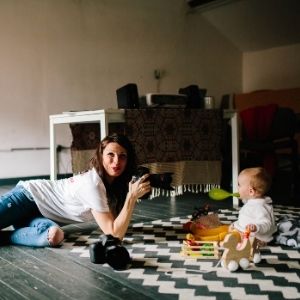
About Anna Hardy
Anna is a family photographer and mentor living in sunny Manchester, mum to 15 year old Joe and 6 year old Huey. She specialises in fearless photography for big-hearted families, finding and celebrating their own unique stories of magic and adventure. With 13 happy years in the photography industry, Anna spent over a decade shooting weddings, before successfully transitioning from wedding to purely family photography, and is now one of the country’s leading family photographers.
As a past secondary school teacher, she’s hugely passionate about education and supporting others to realise their own unique strength and worth and has helped hundreds of photographers develop and grow their own family and wedding photography businesses. She runs The Shutterhood, a membership community that gives photographers who are just starting out the essential tools and foundations to launch and grow their own photography business. She also has a course, The Roost, which shows photographers how to tailor and adapt their business for family photography so that they can successfully transition or add it as an additional ‘arm’ to their photography business.
